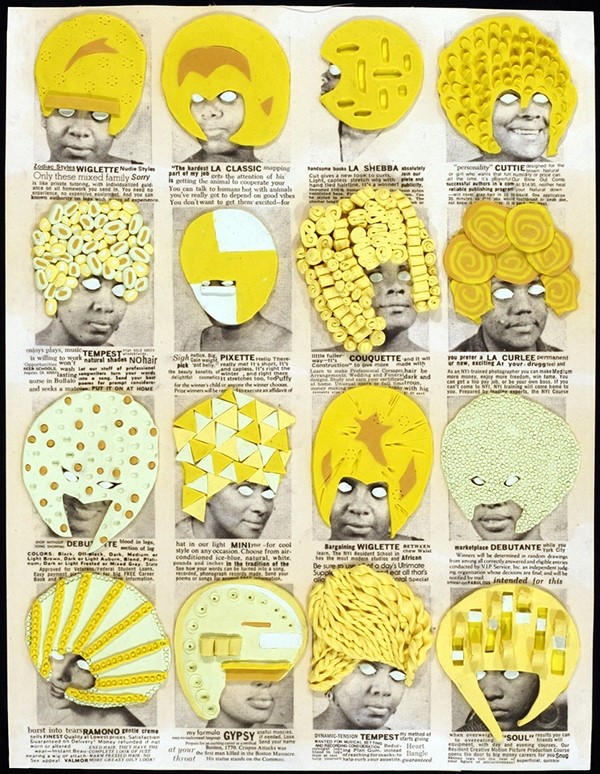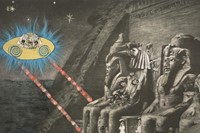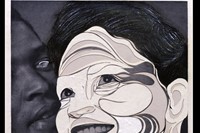The work of American artist Ellen Gallagher is as fluid, and oneiric, as the sea to which she repeatedly returns. The thin, wavy lines of penmanship paper make up the base of most of her paintings...
The work of American artist Ellen Gallagher is as fluid, and oneiric, as the sea to which she repeatedly returns. The thin, wavy lines of penmanship paper make up the base of most of her paintings, while strange, primordial sea creatures, wild-looking Ahabs, and scrimshaw-like etchings variously float or emerge on the surface. Gallagher, who has her first major retrospective at Tate Modern this Spring, has for years traced and excavated, but also added to, the myths and half-submerged narratives of black history, making up a shifting archive rich in possibilities and imaginings. AxME, the title of the show, is black vernacular for “ask me,” an invitation to the viewer to question what is and isn’t true in her work. One such imagining involves a lost black Atlantis, populated by slaves thrown overboard ships during the 18th century who merged with marine life. Murmur (2003-4), a film installation created with Dutch artist Edgar Cleijne, uses stop motion techniques and flickering visuals to evoke the liminal, silvery nature of these creatures, magnified as though under a microscope. Dust motes flash in the beams of projectors, bringing the scenario eerily to life. Elsewhere, white-on-white filigreed depictions of sea-creatures evoke the sun-bleached bones of animals washed up on the shore or left to disintegrate at the bottom of the ocean. An enormous white frame, suggestive of the skeleton of a submerged ship and decorated with rubber forms painted white, is surrounded by watercolour paintings and cut-paper collages in delicate, inky washes, of yet more sea creatures, whales, and African women whose hair has transformed into sea vegetation. These works evince not just a lost world but also a lost language, and the artist returns to the story of Queequeg (the tribal whaler in Moby-Dick) etching unknowable symbols into his floating coffin.
"Gallagher has for years traced and excavated, but also added to, the myths and half-submerged narratives of black history, making up a shifting archive rich in possibilities and imaginings"
Gallagher has referred to her process as “riffing”, and she mines from vintage beauty magazines such as Ebony and Sepia for several large-scale works, usually cutting out wigs, eyes and lips that later resurface, for example, as abstract forms poking up out of shiny black paintings. Her work is densely layered, and threaded through with myriad images and references. She inserts herself, for example, into an image of Matisse sketching a model for an odalisque, with Matisse substituted for Sigmund Freud; and she transposes the musician Sun Ra onto an image of the Temple of Ramses II in Egypt. Like Sun Ra, Gallagher is preoccupied with unearthing a cultural lineage that entails fantastical, sci-fi elements, and locating it in the yawning lacunae that spot history.
Ellen Gallagher: AxME opens at Tate Modern today and runs until September 1.
Text by Laura Allsop



